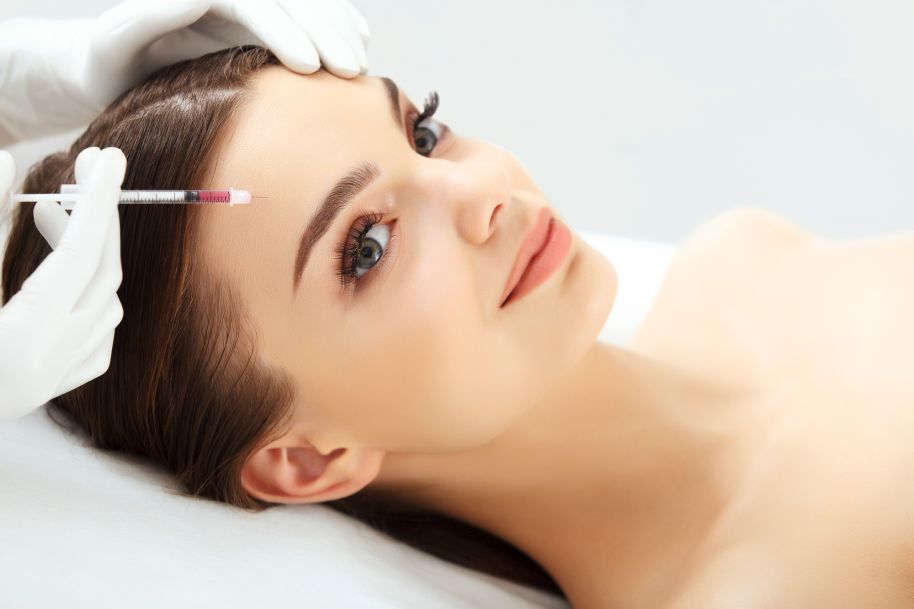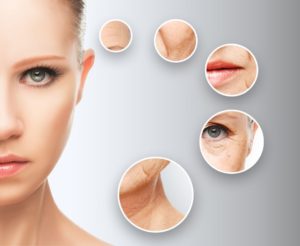When it comes to dermal fillers for wrinkle treatment, Juvederm and Restylane are the most popular options in the game. Not to mention they’re very similar, which is why they’re often compared with one another. If you’re looking for the best option between the two, today we will help you with that!
But before we get into the Juvederm vs. Restylane battle so you can learn which one might be a good option for you, let’s take a look at each treatment individually and see what they have to offer.
What Is Juvederm?
Juvederm is a dermal filler injection with a base of hyaluronic acid that can be used specifically on the lips, around the mouth, around the eyes and on the cheeks. It’s approved by the FDA and it’s one of the most common cosmetic treatments for wrinkles in the US. Application takes from 15 to 60 minutes, depending on the area.
There are different types of Juvederm injections with different bonding and concentrations of hyaluronic acid. Each type of injection is tailored to target a specific area of the face. There’s Juvederm Voluma XC, which increases the size of the cheeks; Juvederm XC and Juvederm Vollure XC, which fill out wrinkles around the nose and mouth; and Juvederm Ultra XC and Juvederm Volbella XC, which are used to plump up the lips.
What Is Restylane?
Restylane is also an FDA-approved dermal filler made with a base of non-animal stabilized hyaluronic acid. It’s a biotechnological product that’s created through natural fermentation. Application takes less than an hour and it can be used not only to smooth out wrinkles, but also for lip enhancement, adding volume to the cheeks, reducing dark circles around the eyes and smoothing out lines around the mouth.
As you can see, both products are very similar, not only in their formula but also in their application and results. Both treatments require no incisions, they don’t take much time out of your day and you’re able to continue with your life once you get the injections since there’s no downtime involved.
Juvederm vs. Restylane
Pricing
Technically, this round goes to Restylane. Do keep in mind that the bottom line cost will depend on how much your provider charges, your area and how many injections you’ll be needing to reach your goals. Restylane injections are less expensive costing from $275 to $700 per injection, but you might need several follow-up injections.
Juvederm, on the other hand, can cost $600 to $620 or more per injection. The cost can be slightly lower depending on whether your area of treatment is smaller, such as lip lines, but it won’t vary much. The good news is that follow-up injections for Juvederm will be farther apart, because the results of this treatment tend to last longer.
So, technically Restylane is the more inexpensive option, but if you require several follow-up injections, the price can really rack up. Juvederm gives your bank account some time to recover because it lasts longer and you won’t need follow-up injections as often.
Side Effects
As you already know from the information provided above, neither Juvederm or Restylane require any downtime, meaning there’s no recovery time. These are injections, not surgical treatments after all. However, even though these treatments are noninvasive, dermal fillers are not without risks. This is why I included a side effects round on this one. And the winner for this one is Restylane because the side effects list is shorter!
The common side effects of Juvederm include: bruising, headaches, lumps or bumps, pain, rash, itching, discoloration and swelling in the are you were injected. The more serious side effects are very rare, but they are as follows: infection, anaphylaxis (severe allergic reaction), skin color changes, necrosis, scarring and numbness.
On the other hand, Restylane’s most common side effects include swelling, bruising, redness, itchiness and tenderness. The more serious side effects are very rare in this case as well, which are: infection, hyper-pigmentation and severe swelling. It’s important to note that, in both cases, a history of bleeding disorders or inflammatory skin conditions can increase the risk of complications.
Results
When it comes to results, Juvederm and Restylane both deliver what they promise. However, the winner for this round is Juvederm because it provides these results a bit more quickly and they also tend to last longer. Juvederm results can last up to 2 years while Restylane lasts from 6 to 18 months.
It’s important to note that even though both of these treatments can be used on the same areas of the face, they each have their strengths. For example, Juvederm works particularly well for eye bags and it can also be used to plump up the lips and smooth wrinkles around them. And Restylane works particularly well on the lips as well as the folds around the cheeks and nose.
Consult with a Professional
The only safe way to figure out which of these two wrinkle treatments is the best option for you is to make an appointment with a professional. Before your book either treatment, make sure you have a consultation first where you can discuss your needs and your vision for yourself as well as your concerns. They will let you know about any individual risks that could disqualify you from getting either treatment.
For example, good candidates for Juvederm or Restylane are adults who don’t have: an allergy to hyaluronic acid or lidocaine, a history of anaphylaxis, excessive scarring or skin pigmentation issues and people who are not taking medication that could make your blood thin and thus prolong bleeding.
A professional opinion is always necessary, no matter how much research you do online. However, it’s still important to understand what you’re paying for before you step into the consultation. Know what you want and know what you need so you can look for options that can cover both bases without compromising your physical or financial health.
*Information in this article is not medical advice and may not be factually accurate. It is intended for entertainment purposes only. Consult with a physician before attempting any tips in this blog post and to get the most up to date factual data about any procedure or treatment.














